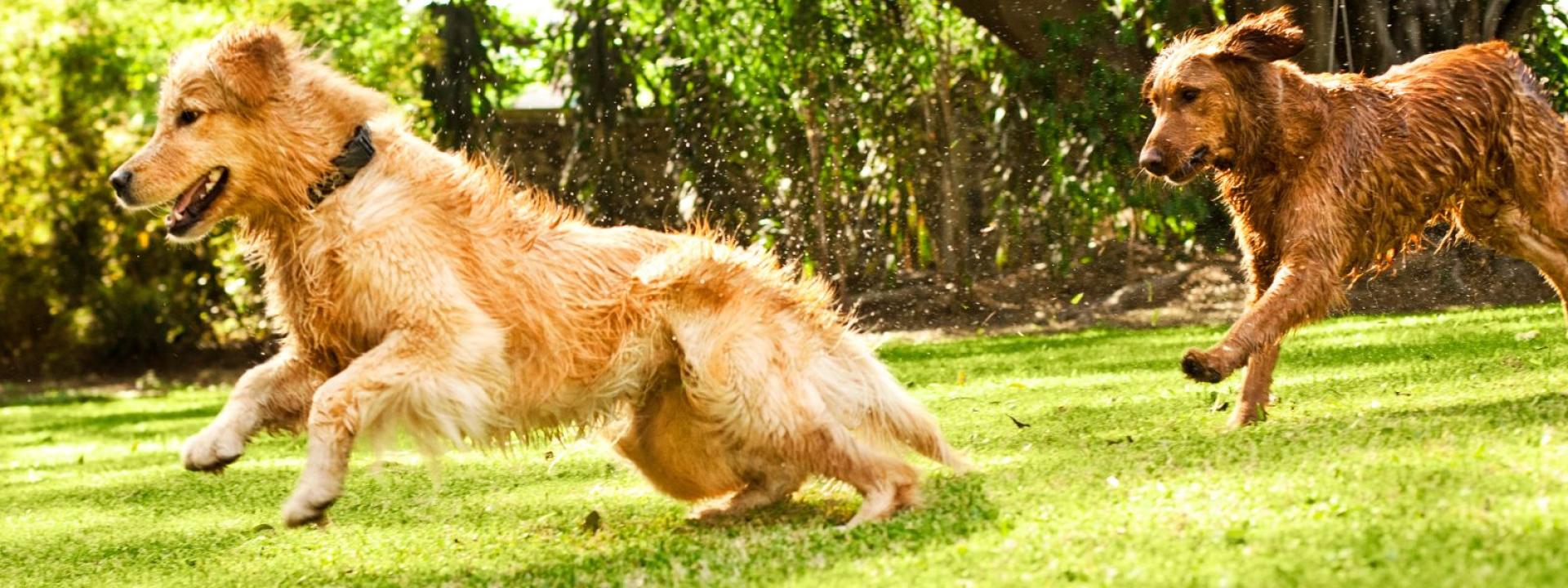Does CCL surgery need to be done right away, or can I wait?
CCL injuries are not an emergency surgical procedure, and you can take some time to make a decision. However, the knee is unstable, and the tibia will want to slip forward every time your pet puts weight on the injured leg. This unstable movement continues to create inflammation and damage other internal structures in the knee joint. With surgical management, we can stabilize the knee, restoring the joint to a more normal state, halting further damage, and allowing inflamed tissues to heal. Keep in mind, studies have shown that the earlier the injury is addressed surgically, the fuller the recovery and your pet's quality of life.
What if my dog has a complication after TPLO surgery?
As with any surgery, there can be complications. Approximately 10% of patients that undergo a TPLO surgery have some sort of complication. Most often, these complications are minor, such as swelling, bruising, and inflammation. If complications occur post-operatively, we are fully invested in your pet's recovery, and we will work with you to make sure your pet returns to normal function as soon as possible. It is important to remember that even if your pet endures a complication, most pets (95%) will still achieve a good to excellent outcome.
How long will my dog limp after CCL surgery?
Recovery from CCL surgery, regardless of the repair, is a gradual rehabilitation process. Pets can expect a positive trend of improvement over six months. Most dogs will be placing the toe pads on the ground by two weeks and starting to drive off the affected leg when walking by 6-8 weeks. Remember, it is an orthopedic injury and surgery. It is reasonable to expect some degree of lameness for the first two months while inflamed tissue and joint inflammation subsides.
How long will it take until my dog can walk normally after TPLO surgery?
Most pets will take eight weeks for the bone to heal, and some pets take 12-14 weeks for the bone to heal. It is important to refrain your pet from any off-leash activity or exercise for the first eight weeks or so until the bone is healed. We recommend short controlled leash walks at two weeks post-TPLO surgery a couple of times a day for 5-10 minutes initially and gradually working into longer walks as your pet's inflammation resolves and strength improves.
How much activity should my pet have after TPLO surgery?
Until the bone has healed, we are completely relying on the implants (plate and screws) to stabilize the surgery site. It takes a minimum of 8 weeks for bones to heal and good scar tissue to form. Therefore, your pet should be confined to a kennel or small room for eight weeks until radiographs show good bone healing. Any running, jumping on or off furniture, or playing could lead to severe complications in the first eight weeks or so while the bone is healing. All outside activity needs to be controlled, slow walking, on a leash, even to go potty. We encourage short and controlled leash walks starting at two weeks 2-4 times daily. These walks should be about 5-10 minutes, gradually increasing the walk time to 20-30 minutes by eight weeks as they heal. Regular controlled walks are important for maintaining muscle mass and joint range of motions range, and light weight bearing is actually beneficial for tissue and bone healing if not overdone.
Can I ice or heat pack my dog's leg following surgery?
Icing can be very beneficial in the first week post-surgery to help reduce pain and swelling. We recommend placing a thin dish towel around the knee and sandwiching the leg with two bags of frozen peas which conforms nicely. Ice for about 10-12 minutes per session 2-3 times daily for the first 4-6 days. Be careful not to freeze the skin.
After the first week, heat packing can be done. We recommend using heat packs that can be purchased at any pharmacy for this purpose. Be sure to test out the hot pack on your own skin first. If it is too hot for you, it is too hot for your pet's skin. Hot pack the knee for 10-15minutes before their walk, and then you can ice after their walk. This is a nice way to reduce pain and swelling and speed healing in the first month of healing.
Does pet insurance cover CCL surgery?
Many pet insurance companies will cover a portion of the cost of CCL surgery. Eligibility depends on your company and your specific policy. We highly recommend pet insurance as a way to help mitigate the cost of veterinary care for your pet. Remember that pet insurance does not cover any pre-existing injuries or illnesses at this time.
Will my dog need TPLO surgery again?
The incidence of needing repeat surgery on the same leg that has had a TPLO is very low. The main causes for this would include a post-procedure meniscal injury (4%-7%), implant-associated infection requiring removal of the implants (less than 1 %), or implant breakage requiring additional stabilization. There is, however, a 60% increased risk of developing a rupture of the cranial cruciate ligament in the other knee within the first year of the first CCL rupture. If this should occur, a second TPLO procedure would be required on that leg as well.
Both my dog's legs need surgery. Can you do both at the same time?
There are cases where both legs are done at the same time, and some surgeons will routinely perform surgery on both legs at the same time. Keep in mind that when doing both legs at the same time can increase your pet's risk for complications. In our opinion, it is best to stage the surgeries by doing the leg your pet is most lame on first, and then once weight bearing is better in the operated leg (2-3 months), then performing surgery in the second leg. We feel staging the repairs tends to be a little easier recovery in most cases for your pet and reduces the risk of a complication.
You can learn more about Tibial Plateau Leveling Osteotomy (TPLO) surgeries here.

